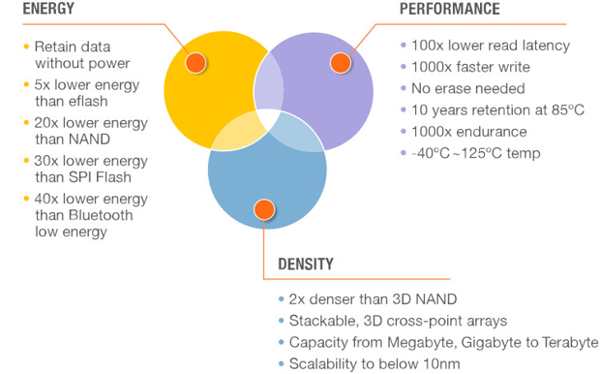CrossBar Resistive RAM Technology for Use in Secure Storage and Processing
Inherently resistant to physical attacks, improving memory security
This is a Press Release edited by StorageNewsletter.com on April 13, 2022 at 2:02 pmCrossBar Inc. announced applications of its Resistive RAM (ReRAM) technology for use in secure storage and processing, where resistance to reverse engineering and physical attacks are essential requirements of the system.
Resistance switching mechanism of CrossBar’s technology is based on formation of filament in silicon-based switching material when voltage is applied between two electrodes.
While historically utilized as a performance, high-density multi-time programmable non-volatile memory, the company’s ReRAM technology is now being offered for use in memory applications requiring higher levels of content security.
“The high-tech marketplace is demanding memory products with increased levels of memory security to counter anticipated physical attacks,” said Mark Davis, president and CEO. “Our filamentary based ReRAM has been demonstrated to provide unique levels of security, including strong resistance to attempts to read our memory through invasive physical hacking.”
“MSI performed extensive delayering and inspection of CrossBar’s ReRAM memory silicon through imaging techniques in an attempt to determine its stored content“, said Michael Strizich, president, MicroNet Solutions, Inc. “After significant evaluation using sophisticated techniques such as measuring electron beam induced current and passive voltage contrast imaging, we were unsuccessful in determining the contents of the memory array“.
ReRAM cell physical intrusion resistance
Due to its basic structure, ReRAM cell itself is inherently resistant to physical hacking targeting sensitive information and data stored in memory. It is not feasible to externally read the physical ReRAM cell electrically, magnetically or through imaging techniques even after delamination of the silicon. Also, the cell is fabricated vertically, is located between layers of metal, and has a small cross-sectional area, making it virtually impossible to measure its resistance in attempts to determine its stored contents.
Compared to oxide based ReRAM, the company’s ReRAM utilizes stochastic electro-chemical ionic movement that is more difficult to analyze or useful for inferring the contents of the ReRAM. The cell microstructure changes are unclonable, and unlikely to be detected using invasive techniques such as FIB (Focused Ion Beam) or SEM (Scanning Electron Microscopy) or TEM (Transmission Electron Microscopy) sampling. For example, TEM images of 2 ReRAM cells holding data states of ‘1’ or ‘0’ show no differences in physical appearance between the storage cells. These features make the content generated in the ReRAM memory or physical unclonable function (PUF) physically untraceable.
The firm’s ReRAM technology is enabling a new class of computing and storage, addressing the needs of performance, high-density memories requiring increased levels of security such as finance and digital asset applications.


















 Subscribe to our free daily newsletter
Subscribe to our free daily newsletter

